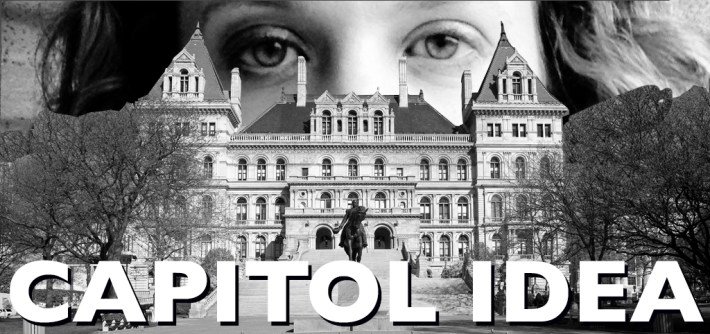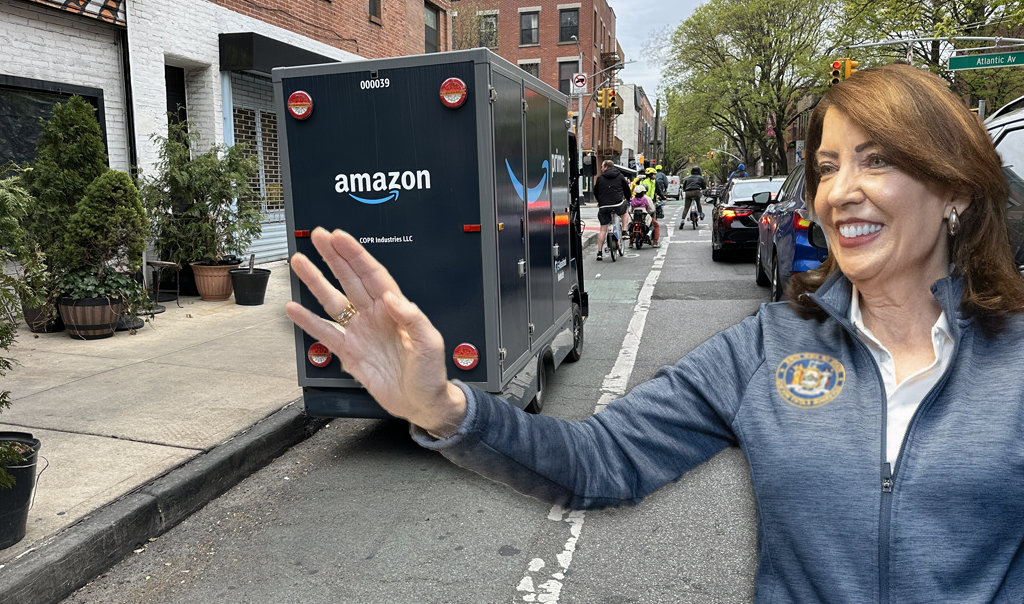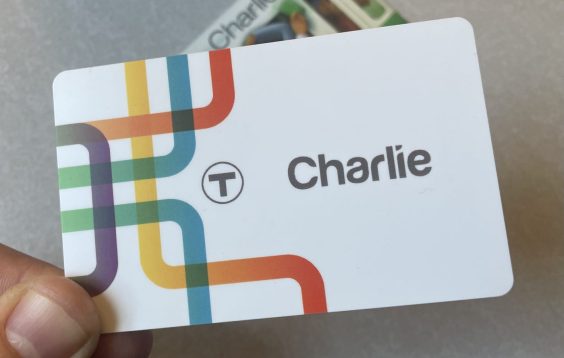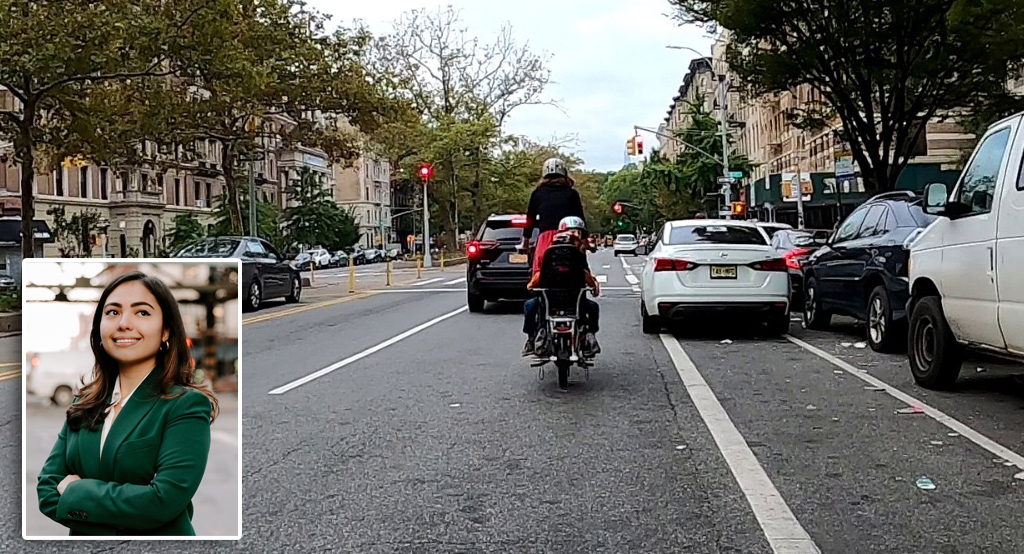
ALBANY — It's safety last.
As lawmakers rushed on Thursday to pass the state's $254-million budget, they dropped three initiatives that Gov. Hochul said would have made roadways safer (though, as we'll see, that's very much in question).
Here's a roundup of what happened to the ideas that Hochul had stuffed in her budget proposal — the good, the bad, and just plain odd:
Daylighting killed again
The legislature rejected Hochul's proposal to force New York City to ban parking at corners near elementary schools, a long-established safety method called "daylighting" because it clears sightlines for drivers and pedestrians.
Legislative leaders told Streetsblog they did out of deference to the city, which is in the midst of a local debate over Council Member Julie Won's bill to require universal daylighting, which is already state law (New York City is allowed to exempt itself ... and it does).
Even though the city Department of Transportation says that 59 percent of pedestrian fatalities and 77 percent of pedestrian traffic injuries occur at intersections, the agency has testified against universal daylighting, claiming that it makes some intersections more dangerous.
Nonetheless, the governor wanted to require the city to at least clear intersections near schools, where “kids walking or biking ... as well as school crossing guards subject to dangerous conditions while on the job.” It would only have affected elementary schools, nor would it have made conditions safer for seniors trying to cross at the thousands of intersections without grade schools. Seniors comprise less than 15 percent of the city’s population, but over 45 percent of pedestrian fatalities, according to DOT.
Senate Democrats admitted they omitted Hochul's daylighting effort, but said they did it so the legislature could now would “work with ... city partners on a comprehensive solution to improve safety around intersections, including making infrastructure and legal improvements as necessary.”
Assembly Member Jessica Gonzalez-Rojas (D-Queens) said she'll still fight for daylighting, which became personal for her last year when she was hit and injured by a car driver in Jackson Heights.
“I think daylighting would have helped me,” she said.
Hochul's spokesperson declined to say why a daylighting requirement got cut, but said that the governor "remains committed to achieving that goal."
For Ben Furnas of Transportation Alternatives, that means passing Won's bill, Intro 1138.
“A daylighting requirement would have made intersections safer around elementary schools, and it’s disappointing that this provision was cut from the New York State budget," he said, calling on the City Council to act.
Bike lane speed limits?
Hochul also wanted to let the city set lower speed limits in bike lanes, where the current speed limit matches whatever the car speed limit is. Last year, the city won the power to set roadway speed limits to 20 miles per hour, but has only done so on a handful of roads, as well as in Manhattan below Canal Street.
Some electric bikes, which are legal in bike lanes, can go 25 miles per hour, alarming cyclists on regular bikes; electric Citi Bikes top out at 18 miles per hour.
Hochul’s argued that a bike lane speed limit bill would "help the city improve safety for road users and pedestrians while keeping decision-making at the local level best able to regulate New York City’s vibrant and complex streetscape.”
But street safety advocates were unimpressed. “It's overdone and micro-manage-y," said Jon Orcutt, a former Bloomberg-era DOT official who advocates for Bike New York.
And Gonzalez-Rojas said the best way to reduce speeds and improve safety is through engineering, not enforcement.
So no one was exactly crying over this spilt measure.
Heavy duty dilemma
The strangest street safety idea proposed by Hochul would have classified ultra-heavy Class 3 e-bikes as mopeds — which sounds like a safety measure at first, but it's unclear if it is.
Class 3 e-bikes are the throttled controlled devices that can legally top out at 25 miles per hour. They are preferred by delivery workers — but do not weigh 100 pounds and, therefore would not have been covered.
The desire to get fast e-bikes out of bike lanes is shared by many groups, but no one went to bat for Hochul's proposal, because the only e-bikes that weigh more than 100 pounds are those big cargo bikes that parents ferry kids around in, or those newfangled four-wheeled delivery vehicles.
But neither of those bikes go particularly fast, so it's unclear how classifying them as mopeds — and requiring their operators to have licenses and stay out of bike lanes — would improve safety. Drivers would certainly complain about getting stuck behind an Amazon delivery cycle going 12 miles per hour in the roadway.
Of course, the fight against e-bikes isn’t over. There's a bill in the City Council that would require the Department of Transportation to create a registration and plate system for all e-bikes, even the slower, pedal-assist models known as Class 1. That bill may not be going anywhere, as the Adams administration opposes it.
But state Sen. Jenifer Rajkumar has a state version that would hand the licensing responsibility to the Department of Motor Vehicles, which would at least not require an entirely new bureaucracy. Coverage of that bill will be a major concern of mine next week.






